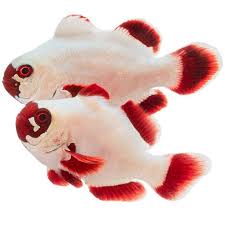Origins and Legendary History of Da Hong Pao

The Birthplace – The Wuyi Mountains
Da Hong Pao (大红袍), known as the “Big Red Robe,” is one of the most prestigious and expensive oolong teas in the world. It originates from the Wuyi Mountains in Fujian Province, China, an area famous for its unique rocky terrain, mineral-rich soil, and misty climate—perfect conditions for growing high-quality tea.
The Wuyi Mountains are a UNESCO World Heritage Site, home to centuries-old tea-growing traditions. The region’s terroir gives Da Hong Pao its signature complex, mineral-rich taste and smooth, lingering aftertaste.
The Legend of the Big Red Robe
One of the most famous tea legends in China surrounds Da Hong Pao. According to the story, during the Ming Dynasty, a scholar on his way to the imperial exam fell seriously ill in the Wuyi Mountains. A monk from a nearby temple brewed him a special tea, which miraculously cured him.
After passing the exam and earning a high-ranking government position, the scholar returned to thank the tea trees. As a gesture of gratitude, he covered them with a big red robe, symbolizing their royalty-like status.
Since then, the original mother trees of Da Hong Pao have been regarded as sacred and priceless, contributing to the tea’s legendary status and high price.
What Makes Da Hong Pao So Expensive?
1. The Rarity of the Original Mother Trees
The most valuable Da Hong Pao tea comes from six ancient mother trees, which are over 300 years old and grow on a cliffside in the Wuyi Mountains. These trees are highly protected, and harvesting from them has been banned since 2006 to preserve their legacy.
✔ Before the ban, a single infusion of tea from these trees could cost thousands of dollars per gram.
✔ The last official auction of authentic mother-tree Da Hong Pao sold for over $1.2 million per kilogram.
Most Da Hong Pao available today comes from clonal reproductions of the original trees, which still produce high-quality but more affordable tea.
2. Unique Growing Conditions
✔ Grown on rocky cliffs, absorbing minerals that contribute to its rich umami and mineral-like taste.
✔ The natural mist and cool temperatures slow down the growth, intensifying the tea’s aroma and flavor.
✔ Hand-harvested and crafted using traditional methods, requiring years of expertise.
3. Complex Processing and Roasting
Unlike green or black tea, Da Hong Pao undergoes an elaborate processing method that involves:
✔ Withering: Fresh leaves are left under natural sunlight to reduce moisture.
✔ Shaking and bruising: This step initiates partial oxidation, giving the tea its oolong characteristics.
✔ Firing and rolling: The leaves are pan-fired to stop oxidation and hand-rolled into their final shape.
✔ Charcoal roasting: The tea is roasted multiple times over several months, developing its deep, roasted aroma.
The roasting process is highly controlled, often taking several months to complete, making it labor-intensive and costly.
The Unique Characteristics of Da Hong Pao Tea
1. Appearance
✔ Dark brown, twisted leaves
✔ Slight sheen from natural tea oils
✔ Bold, full-bodied shape with curled edges
2. Aroma
✔ Strong, roasted fragrance
✔ Hints of orchids, caramel, and dried fruit
✔ A smoky, mineral-rich undertone
3. Flavor Profile
✔ Smooth and full-bodied
✔ A perfect balance of sweetness, smokiness, and mineral notes
✔ Long-lasting aftertaste with hints of honey and cocoa
4. Infusion Color
✔ Deep amber or reddish-brown
✔ Clear and bright, with no cloudiness
Each sip offers a multi-layered taste, evolving with each infusion, making Da Hong Pao one of the most sophisticated teas in the world.
Different Grades of Da Hong Pao
1. Authentic Mother-Tree Da Hong Pao (Original & Extremely Rare)
✔ Harvested from the original six trees (before 2006)
✔ Virtually unavailable for purchase
✔ Prices can exceed $1 million per kg
2. Pure Da Hong Pao (Clonal Varieties)
✔ Grown from genetically identical cuttings of the mother trees
✔ High-quality and most sought-after variety
✔ Rich, deep flavors with an authentic Wuyi terroir
3. Blended Da Hong Pao (Most Commercially Available)
✔ A mix of different Wuyi oolong varieties
✔ More affordable and accessible
✔ Still retains the signature roast and minerality
Health Benefits of Da Hong Pao Tea
1. High in Antioxidants
✔ Contains polyphenols that fight oxidative stress
✔ Slows down aging and improves skin health
2. Boosts Metabolism and Aids Digestion
✔ Increases fat oxidation, making it a great weight-management tea
✔ Reduces bloating and promotes gut health
3. Supports Heart Health
✔ Lowers cholesterol levels
✔ Improves blood circulation and reduces the risk of heart disease
4. Enhances Mental Clarity and Reduces Stress
✔ Contains L-theanine, which promotes relaxation without drowsiness
✔ Helps improve focus and cognitive function
How to Brew Da Hong Pao for the Best Flavor
☯ Gongfu Brewing (Traditional Chinese Method)
✔ Tea-to-Water Ratio: 6g tea per 150ml water
✔ Water Temperature: 90–95°C (194–203°F)
✔ Steeping Time:
- 1st infusion: 10–15 seconds
- 2nd infusion: 8–12 seconds
- 3rd infusion onward: Increase by 5 seconds per brew
💡 Pro Tip: Use a Yixing clay teapot or a Gaiwan to enhance the tea’s depth and complexity.
🍵 Western Brewing (Simplified Method)
✔ Tea-to-Water Ratio: 3–4g tea per 250ml water
✔ Water Temperature: 90°C (194°F)
✔ Steeping Time: 2–3 minutes
This method is easier for casual drinkers but provides fewer infusions compared to Gongfu brewing.
Why Da Hong Pao Is a Must-Try Tea
✔ A tea steeped in legend and history
✔ A luxurious, complex flavor that evolves with each infusion
✔ A rare and valuable drink that showcases China’s rich tea culture
Da Hong Pao is not just a tea—it is an experience, a symbol of prestige, and a treasure of the Wuyi Mountains. Its steep price reflects its rarity, craftsmanship, and cultural significance, making it one of the most sought-after teas in the world.
💎 Would you invest in a cup of Da Hong Pao? Share your thoughts below!









